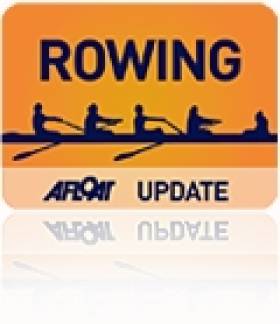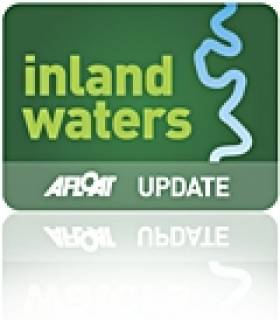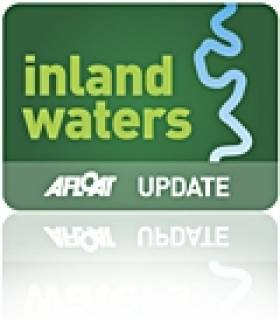Displaying items by tag: Leitrim
Six-Lane Rowing Course Planned for Leitrim
County Leitrim has received a welcome boost with the announcement that a recent round of Government funding will enable the development of an international standard rowing facility on Lough Rinn, near Mohill in the south of the county.
The funding which was provided by the Department of Transport, Tourism and Sport as part of an overall €6 million investment across four projects will enable Leitrim County Council in conjunction with Carrick on Shannon Rowing Club develop a 2,000 metre, six lane facility which will be capable of hosting national and international events as well as acting as a training base for international teams in advance of major competitions.
The development of the facility on Lough Rinn is already underway through Leitrim County Council and the facility will become available by April of next year. Once completed the Rowing Facility will be run under the supervision of the Carrick on Shannon Rowing club which is the oldest rowing club in Ireland its foundation dating back to 1836.
Commenting on the potential of the new rowing facility, Sinead McDermott, Leitrim Tourism said, “Today’s announcement really is a milestone for Leitrim, the development of this facility will not only raise the profile of Leitrim in a sporting sense but will also have a considerable impact on the local economy and tourism industry. By its very location, this new facility will be extremely accessible for rowing clubs and teams from Northern Ireland, Dublin and the UK.”
Anthony Dooley, President of Rowing Ireland echoed this view saying, ''Rowing Ireland believe that the development of Lough Rinn will be a major boost to the development of rowing in the region and will attract rowing people across all age groups and classes both within Ireland and from abroad, having a multi-lane course in such a beautiful and picturesque location will be major draw.”
Lough Rinn, a 162 hectares lake which is 3,000 meters in length is ideally suited as a rowing facility and the development project will see the creation of a six lane facility through the placement of pontoons alongside retractable rowing equipment. There will also be a number of spectator points developed with a walkway planned around the entire lake over the next number of years.
Outlining the impact the rowing facility will have on the sport, Tony Keane, President of Carrick on Shannon Rowing Club said, “We are thrilled with the awarding of the funding and with the development of the rowing facility. We already have strong links with Clubs across Ireland, Northern Ireland and England and would hope that this facility would enable us to host landmark rowing competitions which would not only increase interest in the sport but also provide a welcome boost to Leitrim.”
Rowers and spectators who visit Leitrim in the future will be well catered for with the four star Lough Rynn Castle Hotel on the shore of the Lake itself and the vibrant town of Carrick on Shannon less then fifteen minutes drive.
New Wheelyboat Makes Lough Rynn More Accessible
Leitrim Guardian Person of the Year Brendan Harvey was on hand to launch Lough Rynn's new Wheelyboat last weekend, the Leitrim Observer reports.
The boat is specially designed to meet the needs of people with disabilities in the area, giving them greater access to Leitrim's lakes and inland waterways for fishing or pleasure trips.
Built in England by registered charity the Wheelyboat Trust, the project was initiatied the Leitrim Association of People with Disabilities (LAPWD), with help from the Rinn-Shannon Agling Club.
The boat, named Ernest's Pride, is so called in tribute to Ernest Catherines, a "driving force" behind the scheme who passed away last month.
High Water Levels on Shannon Erne
Due to recent heavy rainfall on the inland waterways strong currents and flows may be experienced at jetties, locks and bridges on the Shannon-Erne Waterway, Waterways Ireland has warned this evening. Additionally air draft at bridges should be closely monitored on approach especially at Ballyconnell, Ballyheady, Coologe and Leitrim. Masters ofvessels should navigate with caution when approaching such structures. Waterways Ireland also wishes to advise all users of the Shannon-Erne Waterway of restrictions associated with the high water levels. Lowerlanding jetties at Skelan Lock 3, Ardrum Lock 5 & Ballyduff Lock 7 are currently flooded. Waterways Ireland will continue to facilitate any customer wishing to make apassage through the locks by prior arrangement with Waterway Patrollers.































































